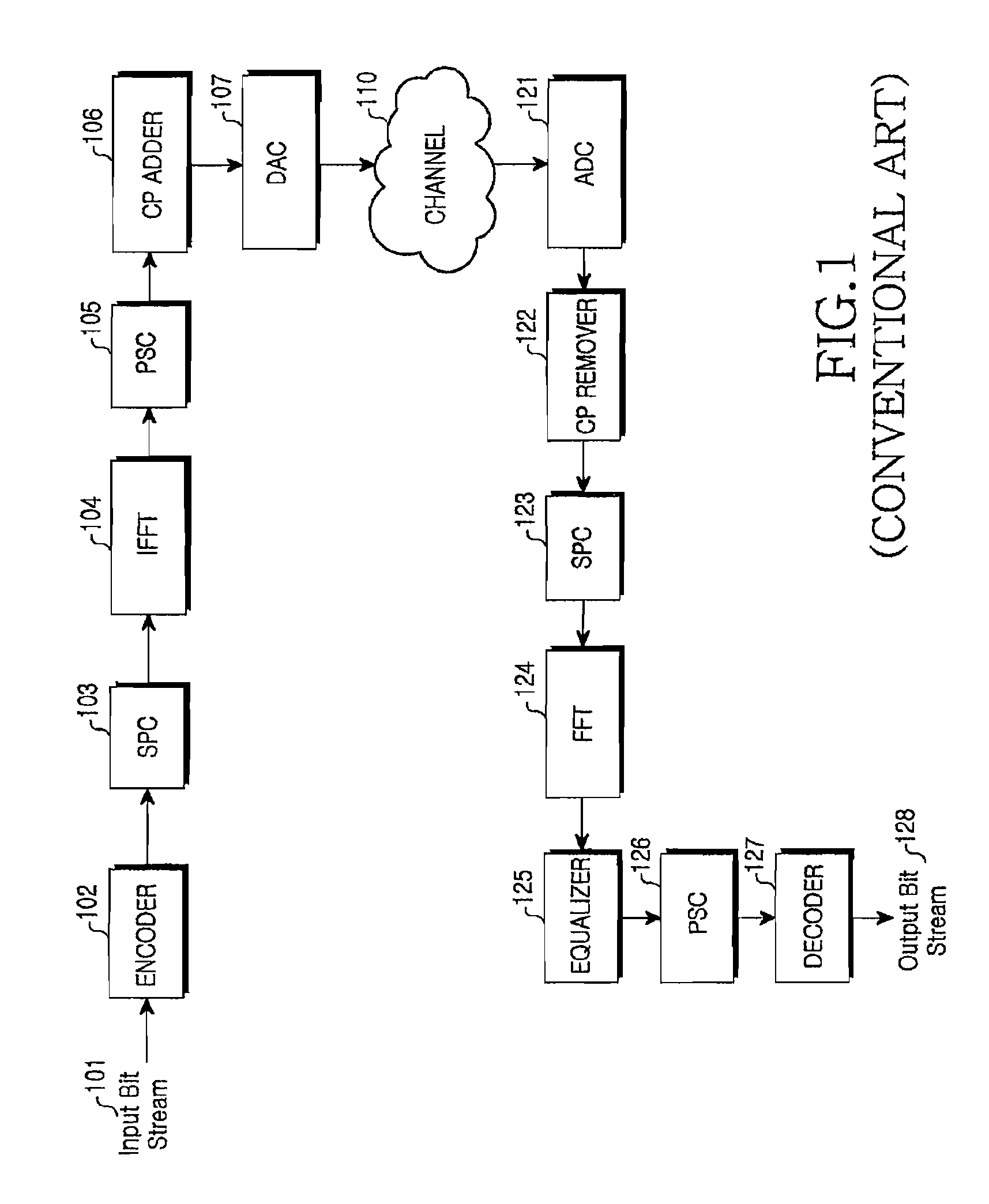Apparatus and method for carrier frequency synchronization in an OFDM system
a carrier frequency and carrier frequency technology, applied in the field of wireless communication systems, can solve the problems of significant degradation of bit error rate (ber) performance, interference between fft outputs, and limitations of actual system implementation of ofdm schemes, so as to improve the performance of initial carrier frequency offset detection and the degradation of autocorrelation characteristics
- Summary
- Abstract
- Description
- Claims
- Application Information
AI Technical Summary
Benefits of technology
Problems solved by technology
Method used
Image
Examples
Embodiment Construction
[0060]The matters defined in the description such as a detailed construction and elements are provided to assist in a comprehensive understanding of exemplary embodiments of the invention. Accordingly, those of ordinary skill in the art will recognize that various changes and modifications of the embodiments described herein can be made without departing from the scope and spirit of the invention. Also, descriptions of well-known functions and constructions are omitted for clarity and conciseness.
[0061]In an Orthogonal Frequency Division Multiplexing (OFDM) system, operations of an initial carrier frequency estimator can be divided into a case where correction is made in a digital domain as illustrated in FIG. 4A and a case where correction is made in an analog domain as illustrated in FIG. 4B.
[0062]Referring to FIG. 4A, a Radio Frequency (RF) receiver 420 converts an OFDM signal received through an antenna 410 into a baseband signal and then outputs the baseband signal to an Analog...
PUM
 Login to View More
Login to View More Abstract
Description
Claims
Application Information
 Login to View More
Login to View More - R&D
- Intellectual Property
- Life Sciences
- Materials
- Tech Scout
- Unparalleled Data Quality
- Higher Quality Content
- 60% Fewer Hallucinations
Browse by: Latest US Patents, China's latest patents, Technical Efficacy Thesaurus, Application Domain, Technology Topic, Popular Technical Reports.
© 2025 PatSnap. All rights reserved.Legal|Privacy policy|Modern Slavery Act Transparency Statement|Sitemap|About US| Contact US: help@patsnap.com



